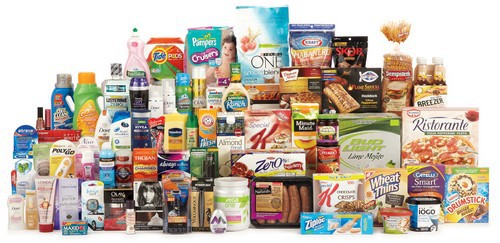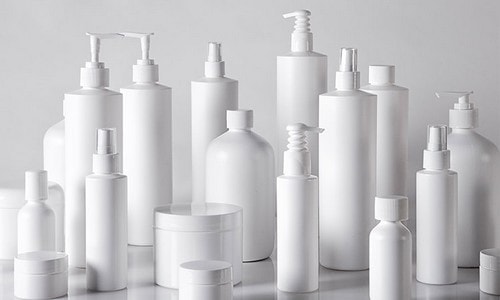To understand the concept of Product Class, it becomes essential to first understand what exactly a “product” is. A product can be defined as anything that is offered to a market for consumption. The product can be of any kind (tangible or intangible) and is offered to satisfy a need. The key to remember here is that a product is basically a need-satisfying offering.
In marketing circles, it is a commonly known fact that a large majority of products go beyond just needing satisfying. Businesses try to infuse several inputs to the “basic need satisfying product” and thus move beyond just meeting the needs of the consumers. By adding advanced functions and features, convenient and attractive packaging and other fancy frills, the final product that is offered to the consumers goes much beyond the basic needs.
A product may finally serve different purposes, take different forms and serve different types of buyers. Since products can be of various kinds, it becomes pragmatic to divide different kinds of products into similar classes so that it becomes easier for businesses to draft suitable strategies that would govern products grouped in the same class.
Table of Contents
Definition of “Product Class”
A product class is a group of similar products which can somewhat substitute each other. The products in the same class have similar features and functions and are catered to the same demographic consumer. Product class can be broad or narrow.
Narrow product class consists of products that include a definite set of products used for a specific purpose. An example would be Body Cleaning products such as shower gels, body washes and soaps. On the other hand, cleaning products would come under Broad product class and would include detergents, utensil washing gels, shampoo, body washes and others.
Different kinds of Product Class
Traditionally, products – based on their use – were broadly classified into consumer products and industrial product. However, with changing times, the above two product classes have been divided further. Let us discuss the classes that products are divided into today:
1. Consumer Goods
Consumer products referred to all those products that were meant for personal use or direct consumption by the consumer. Based on the shopping habits of the target consumer, Consumer goods are further classified as follows:
a. Convenience goods :
Products that are often purchased by the consumer and do not need much forethought or effort on the part of consumers are called as Convenience Goods. Such goods are consumed often and thus are purchased immediately with minimum effort. Examples of convenience goods are Newspapers and most of the FMCG (fast moving consumer goods) products such as food staples, toiletries and others. Convenience goods can be further classified as follows:
- Staple Goods – Products that are purchased routinely and at specific intervals come under this category. Examples would be food staples and toiletries.
- Impulse Goods – These are products that are not routine buys. Though consumers buy it as an impulse, they do not put in much effort to evaluate them. Examples would be buying chocolates.
- Emergency Goods – These are products that are purchased during the emergency. Though there was no decision to buy these products, the consumer is forced to buy these because of an emergency. Examples would be an umbrella during the rainy season or medicines during an illness.
b. Shopping Goods :
These products are planned purchases where a consumer evaluates various us brands – based on price, features offered and other traits – and then makes the decision. Unlike the purchase of convenience goods, shopping goods involve considerable expenditure and thus Consumers are ready to invest effort and time comparing shopping products before making the final decision. Examples of shopping goods would be the purchase of clothing, home furnishings and furniture. Shopping goods can further be classified into:
- Homogeneous shopping goods – these are products that are similar in quantity and feature and differ in price. Since these offer similar features but have different prices, consumer’s price comparison is justified. An example here would be Top Wear the for women. Since the features are similar in top wear, a consumer compares the price, fabric and brand value before making the decision.
- Heterogeneous shopping goods – These are products that differ in features and services. Consumers evaluate these products on their features and services and not on their price. The example here would be a purchase of a front loading washing machine. Since different brands offer different features in top loading washing machines, consumers compare these on their features before making the decision.
c. Speciality goods
These are goods for which consumers need to make the considerable effort before making the purchase. The products have unique features and brand characteristics and thus consumers do not compare between different brands. Rather, they might compare between different models of the same product in the same brand. An example here would be a purchase of Maruti car. The consumer, having decided on purchasing a Maruti car will only compare the different models of Maruti.
d. Unsought goods
These are products that the consumer is unaware of and thus has no intention of buying. Products such as Mutual funds or Life Insurance come under this kind the and need to be advertised to entice consumers.
2. Business Goods
These are products that are used to manufacture other products. They can be used as raw materials, spare parts, capital supplies or consumables. Business goods are further classified as follows:
a. Materials and parts
As the name suggests, these goods are used as raw materials for the production of goods or enter the business as manufactured materials or as component parts. Examples of raw materials would be cotton that is used to manufacture fabric. Manufactured materials are component materials such as iron or zinc that are used to manufacture other products. Component parts, such as integrated circuits, are products that enter the final product without being changed.
b. Capital Items
These are long-lasting goods that assist developing or managing the finished product.
c. Supplies and business services
These are products that facilitate developing or managing the finished product supplies. This category is further divided into Operating supplies such as writing papers and maintenance and repair products such as painting.
Liked this post? Check out the complete series on Product Management


I want distributorship
I’m interest